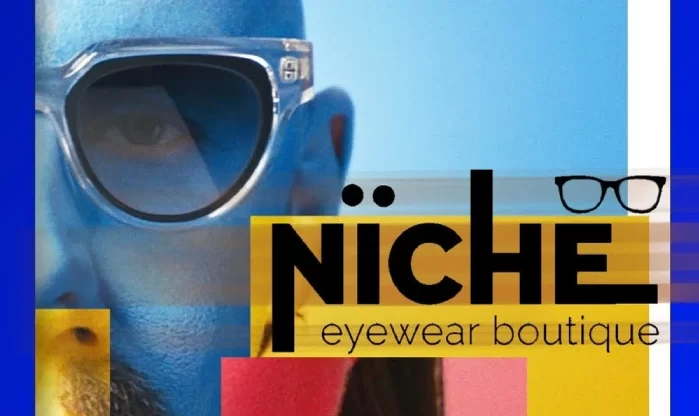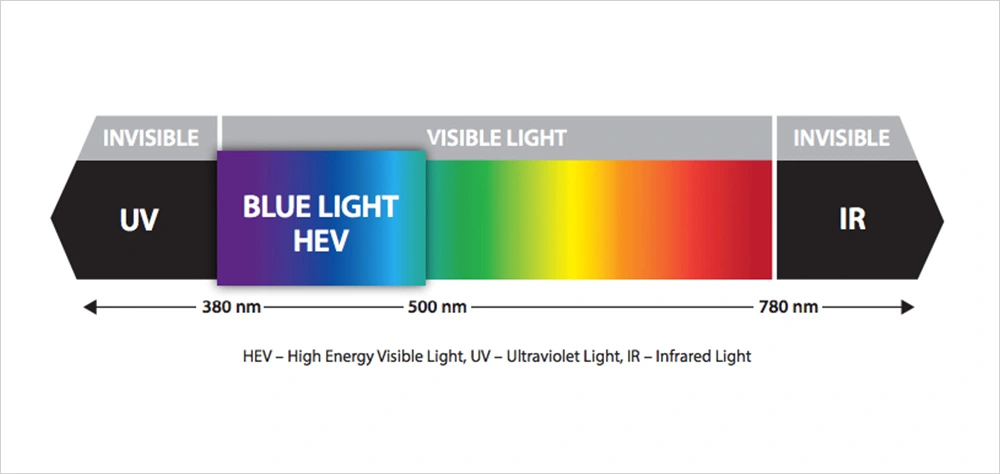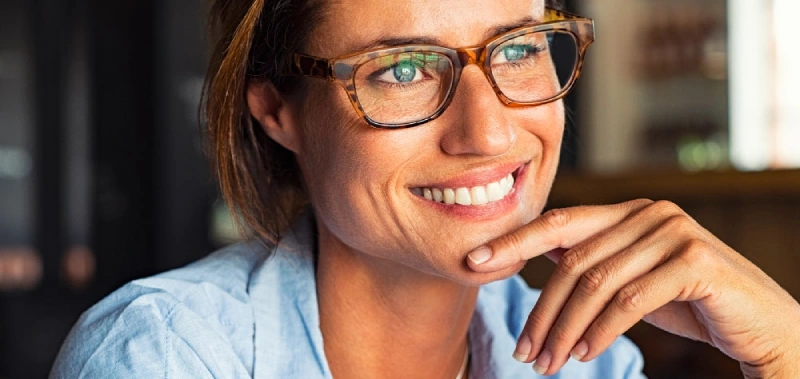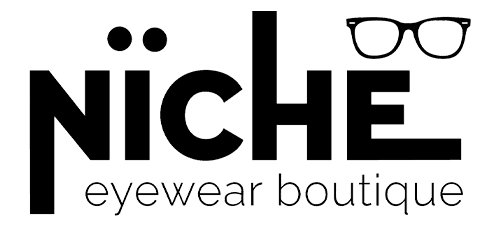
You are reading those very words from a device that emits blue light, aren’t you?
So far, nothing out of the ordinary: current lifestyles revolve around all types of screens (computer, tablets, phones, TV and other digital media). As a result, the time spent in front of a screen has reached records. During COVID-19 lock downs, 32.4% of the population used a blue light-emitting device 9 to 11 hours a day*. Another 15.5% used those devices up to 12 to 14 hours per day — a sizable increase in screen time, probably due to changes in the way people worked during the pandemic.
All these screens produce significant levels of harmful blue light and overexposure can have undesirable effects on your visual health in the long term.
Should you be concerned? Let’s take a look.
What is blue light exactly?
Visible light is quite complex – in a nutshell, light waves vary in lengths, and each color has a determined wavelength. The longer the wave, the less energy it transmits. Blue light has very short, high energy waves that are similar to UV rays.

Exposure to blue light – is good for the body?
The most natural source of blue light is sunlight. It is necessary for maintaining a good metabolism, as it helps regulate circadian cycles, including the sleep rhythm.
The right amount of blue light exposure helps boost your alertness, memory, cognitive function and improves your mood. Exposing yourself to blue light during the day helps maintain a healthy daily routine.

A darker shade of blue
Blue light can also be artificial, emanating from digital devices and LEDs. It is this form of blue light that can be harmful to the eyes. The extent of the damage depends on the wavelength to which you are exposed and the time of exposure.
By using digital media close to your eyes for long periods of time, it is possible to develop visual fatigue. The main symptoms are :
- dry eyes
- irritated eyes
- blurred or double vision in the morning or evening
Exposure to harmful blue light can also damage your retina, which is called phototoxicity**.
But don’t panic, the risks associated with long exposure to harmful blue light are not inevitable!
Chase the blues away
If you are constantly using your phone for texting, emailing and web browsing, a simple way to reduce your blue light exposure is to apply a blue light filter to the screen of your devices. For optimal protection, you can opt for eyeglass lenses with blue light protection. There are several degrees of innovation that will offer you protection and comfort of vision.
Pure Blue UV lenses provide all-in-one protection against harmful light both indoors and outdoors with enhanced aesthetics and long-lasting clarity.
Anti-reflective coatings have been developed to provide an added degree of blue light protection while guaranteeing the highest level of transparency and aesthetics. SeeCoat™ Next Blue has the unparalleled capacity to filter blue light and UV rays while providing natural colours to the wearer.
If you’re an active person who travels frequently between indoors and outdoors, you may want to consider photochromic lenses such as Transitions® lenses, which provide UV and blue light protection indoors and automatically darken in sunlight to increase comfort and reduce glare outdoors.
Make the best choice for your eyes and protect them from the harmful blue light of your screens. Discover our range of products and consult your Nikon Lenswear eye care professional today for more advice on the best glasses that complement your lifestyle and protect your eyes from blue light.
